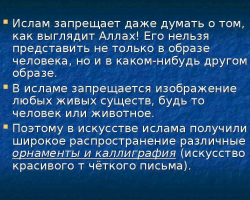In this article there is information on how to write a word as before or still? You will find out when the word is written separately, and when through a hyphen. Also watch tables with examples and videos.
Content
There are words in Russian grammar that are written differently in various situations. The adverb can be ranked to these: as before, the pretext with the adjective: still. As you can see, these words are used in a letter through a hyphen and separately, together, it is still never used. Further in detail we will find out how it is still written, still in a letter, and when to apply one or another option.
How is it still written: when a word is written through a hyphen?
It will be easier for you to remember how it is still written if you learn to determine what part of the speech is in front of you. For example, we will use the following sentence: We will still do everything, despite all the persuasion.
In this sentence, the word is still used through a hyphen, because from the verb we will make a question to it? And when, by the way, they put the question of how?, Then it refers to the adverb, the adverbs of such a plan, in turn, are used with a hyphen in the letter.

According to the rules, this adverb is formed from such a part of speech as an adjective. Thanks to the prefix ON- And the suffix -Mo-. The old example ⇒ still. And the adverbs that are formed thanks to the adjective end at TO HIM, OULike Still In this case, they are written through a hyphen. Below are the rules and examples of application in the table of such adverbs with the prefix ON:
|
Suffix: |
Offers with adverbs through a definition: |
|
-TO HIM- |
Live stillAnd play differently. |
|
-Mo- |
Better dress differently, there is not summer yet. |
|
-Stski- |
Sing in Turkish Maria had not yet succeeded. |
|
-SC- |
If a like a friend They treat you, then why do you provoke a scandal. |
|
-I- |
Live wolf, this does not mean to betray. |
As you can see the rules for writing adverbs with a prefix ONIt’s not so difficult to remember. However, one should be able to distinguish adjectives. After all, the names of the adjectives are single -sounding with adverbs, and vary in writing. And to determine which part of the speech appears at the moment, it is possible only in a sentence or phrase. Examples:
- I decided not to change anything and do everything (how?) still.
- My brother will study (what?) Still My textbook.
- He all lives like that (how?) still In gold.
- She went (by what?) still route.
When you cannot decide how to write correctly Still, it is better to pay attention to the very meaning of the sentence.

IMPORTANT: If a Still performs in the form of an adverb (question how?), then it should be written only with a hyphen, and when Still - An adjective (which question is?), Then it should only be written separately.
| In what part of speech is the word used? | Examples of proposals: | How to write correctly: |
| Adverb |
|
Still |
| Adjective |
|
Still |
How is it still written as before: when the word is spelled separately?
Next, consider how the word is written correctly Still, if this name is an adjective. Example: We went down the same route to the lake. Here, as before, it is an adjective. It is attached to the noun: the ways, answers the question: Which? And between ON and Far The question can easily be inserted: Which? Based on the rules of grammar, such a word is written separately.

So, we repeat, according to - the preposition, the former is the adjective name, from the word the former, former, etc. This phrase is attributed to a noun (route). For verification, you can raise the question which one? Example:
- He rushed along the previous route. What route? - Far.
In addition, in order to check this adverb or adjective, try to remove it from the phrase or text. The semantic characteristic will not be lost.
Example:
- He rushed along the route.
|
Offers with adjectives |
Offers without adjectives |
Offers with adverbs |
|
We will still live at the previous address. |
We will live at the address |
We will still live. |
|
We work as previously |
We work on schedule |
We are still working |
As you can see, you can easily distinguish, where the adjective name is, and where the adverb is in the sentence. To do this, you should be a little praying, and be able to distinguish between the semantic characteristics of the text.







